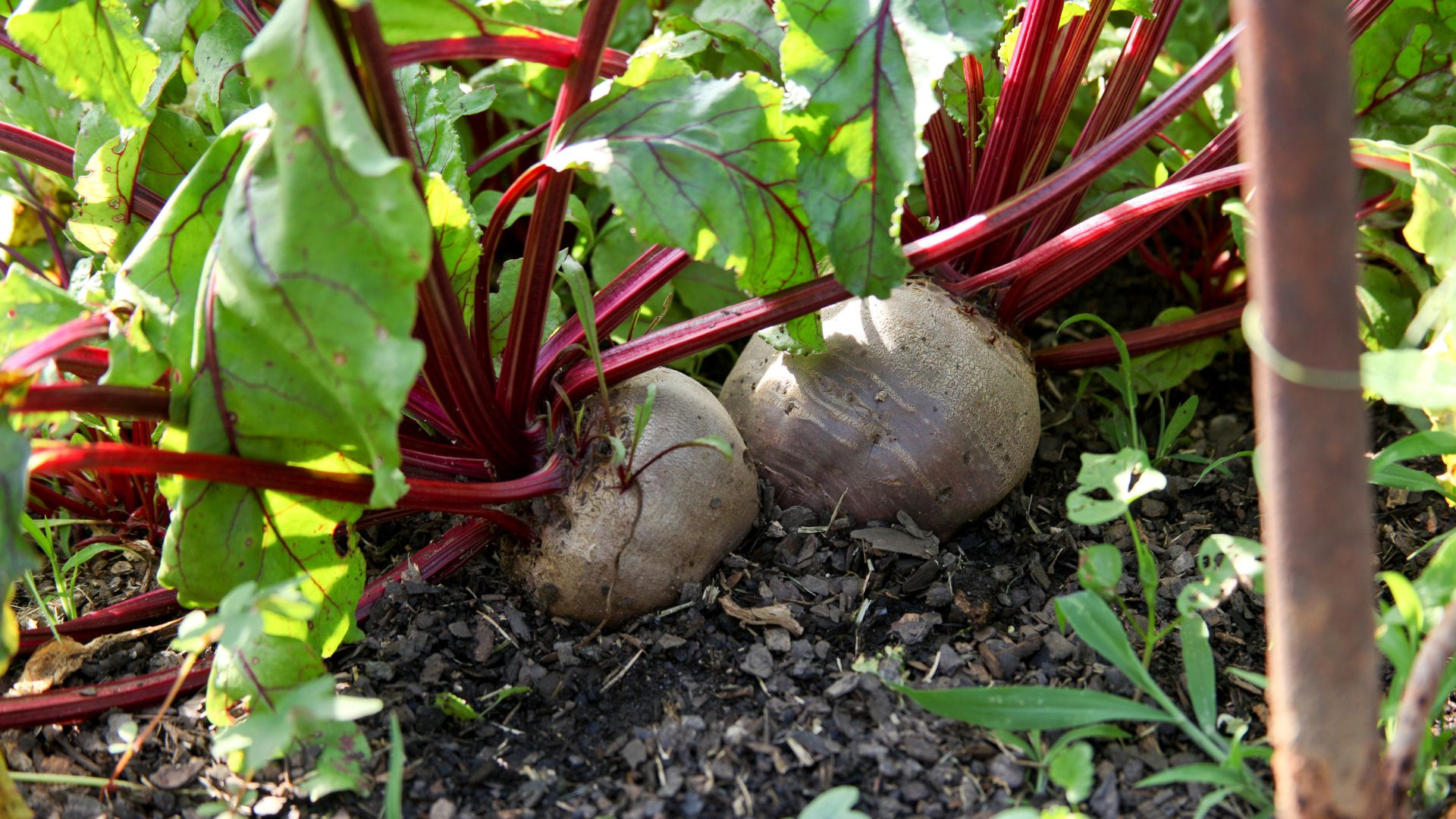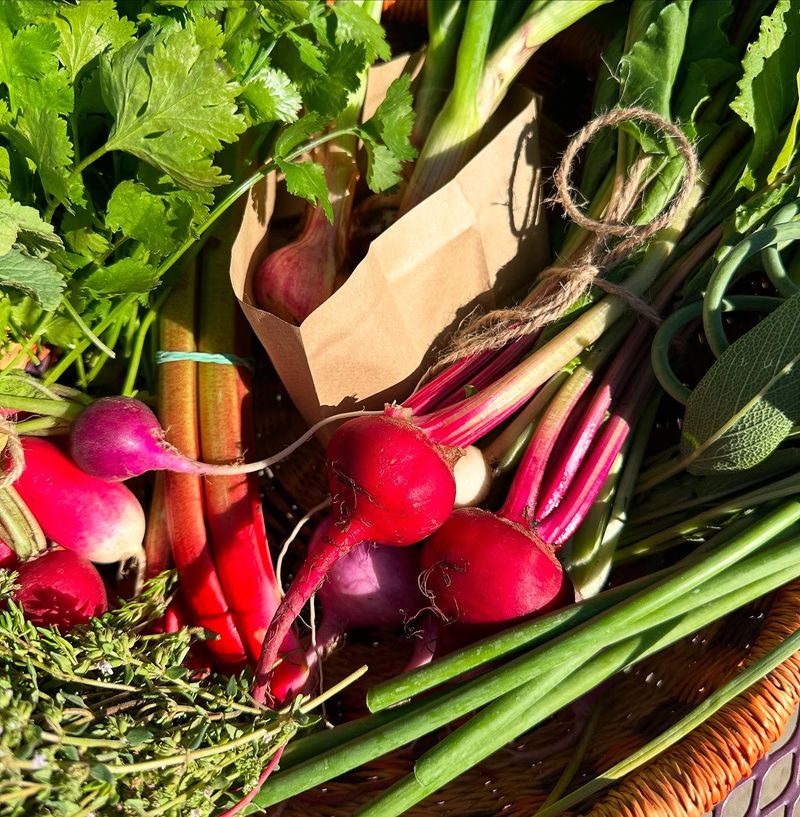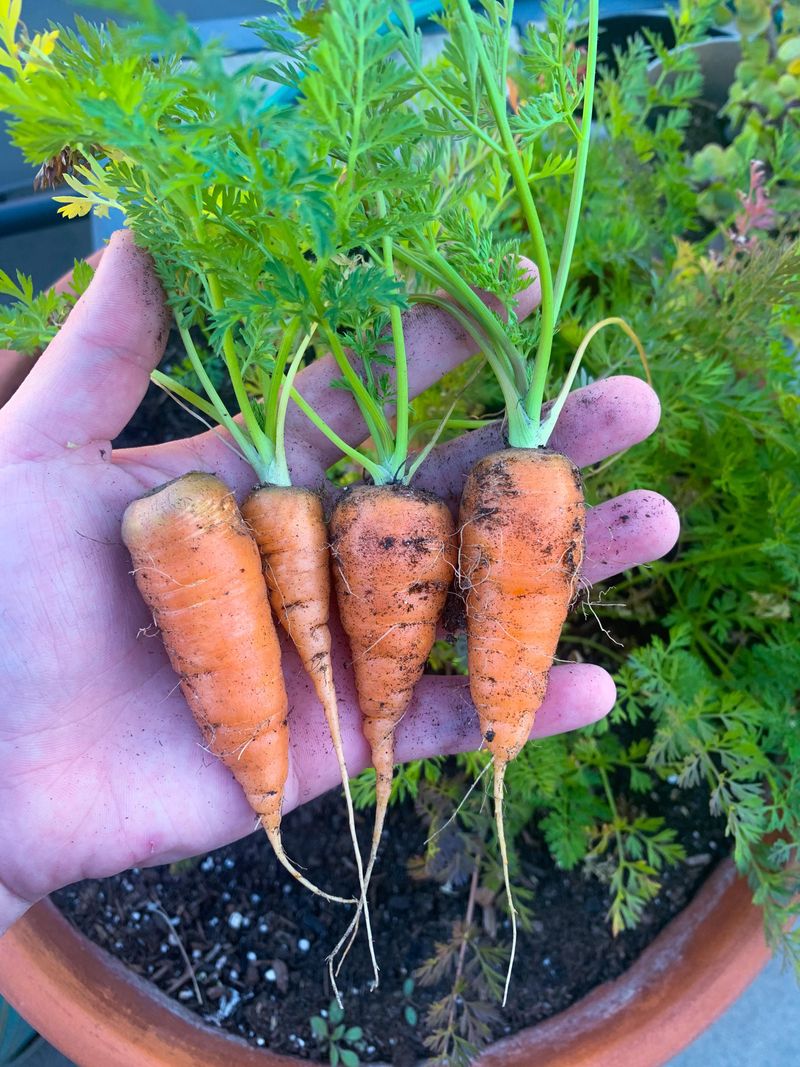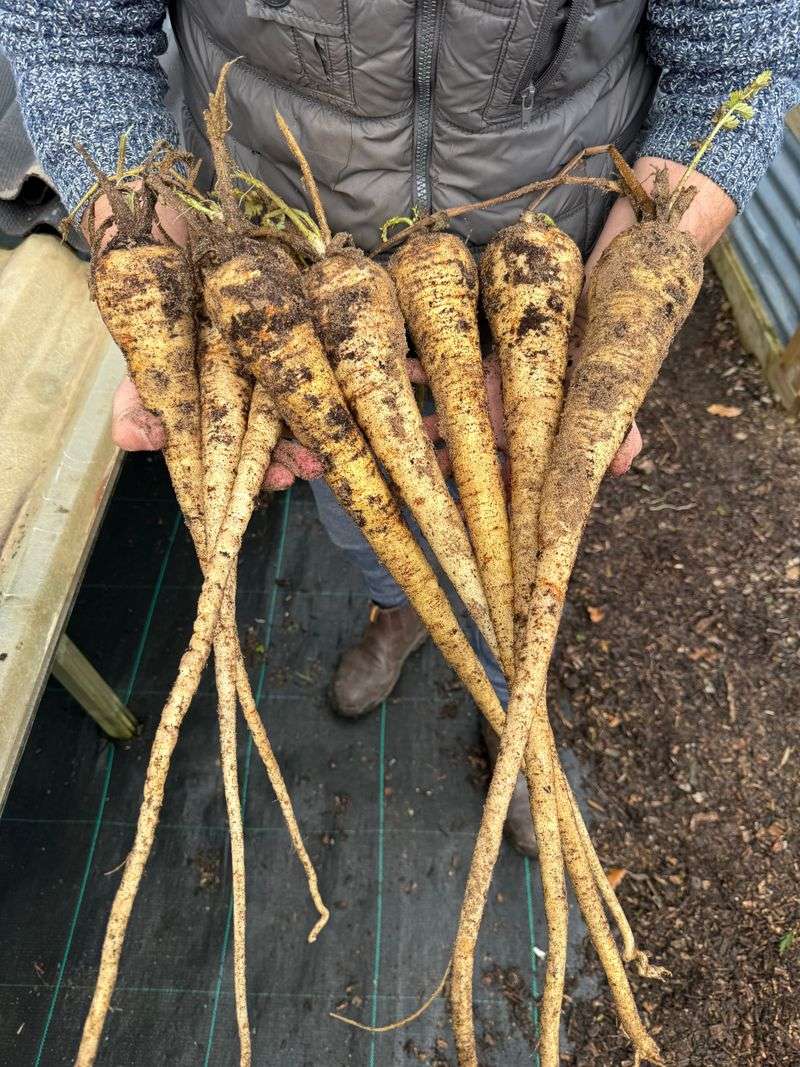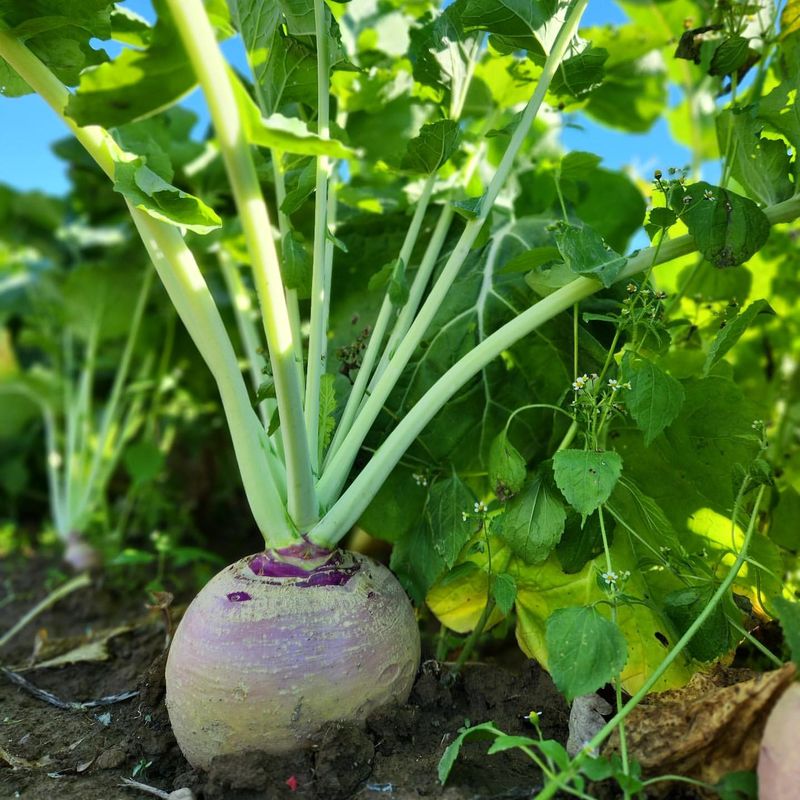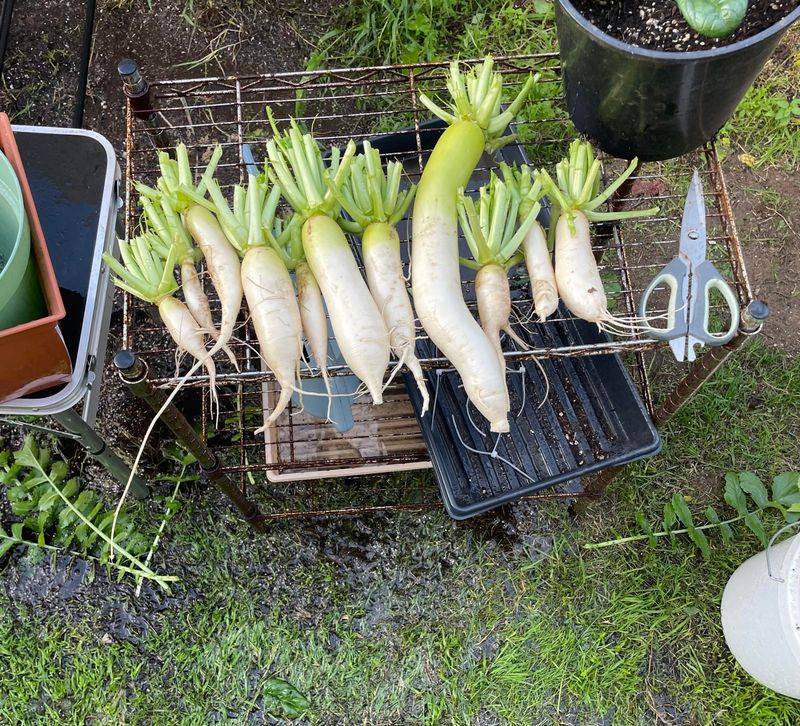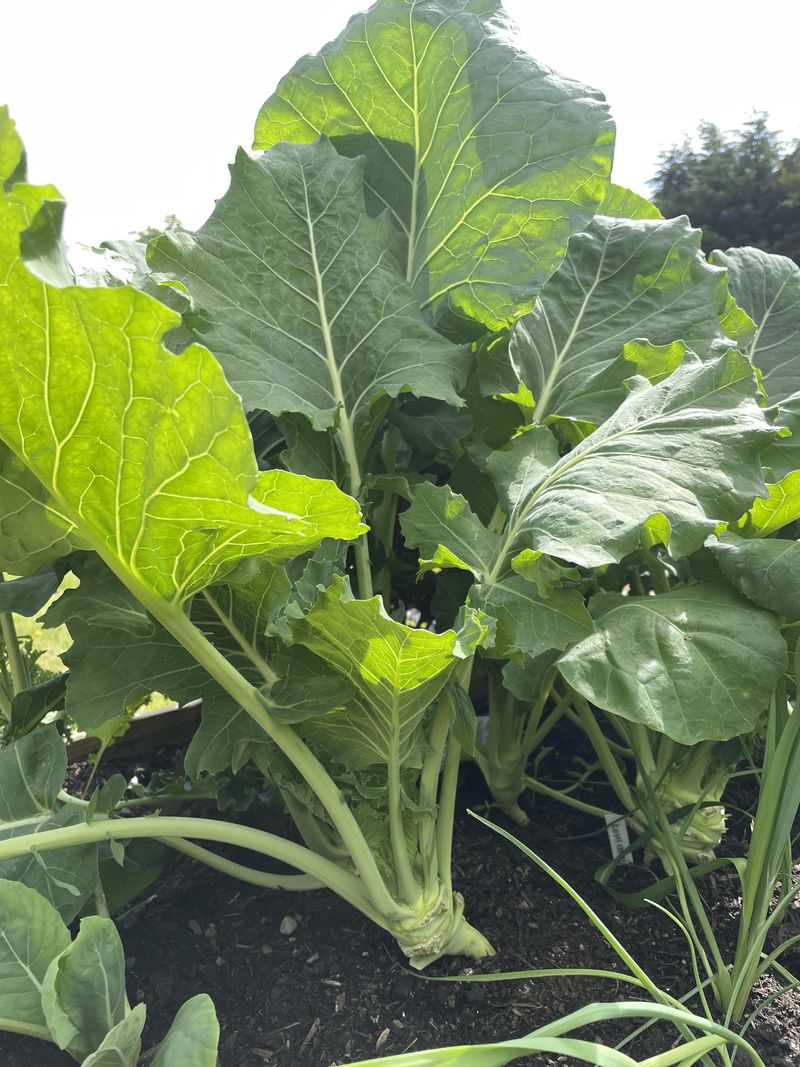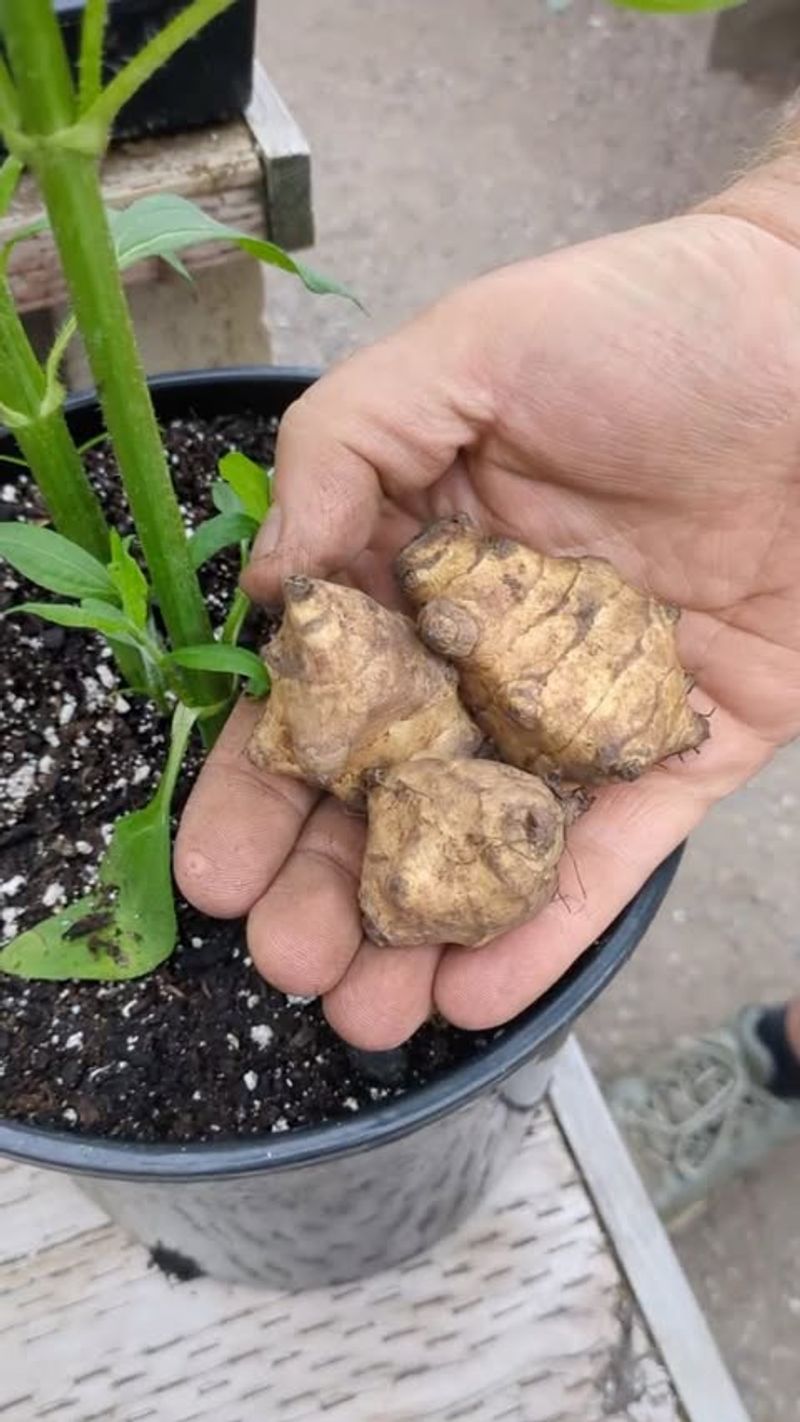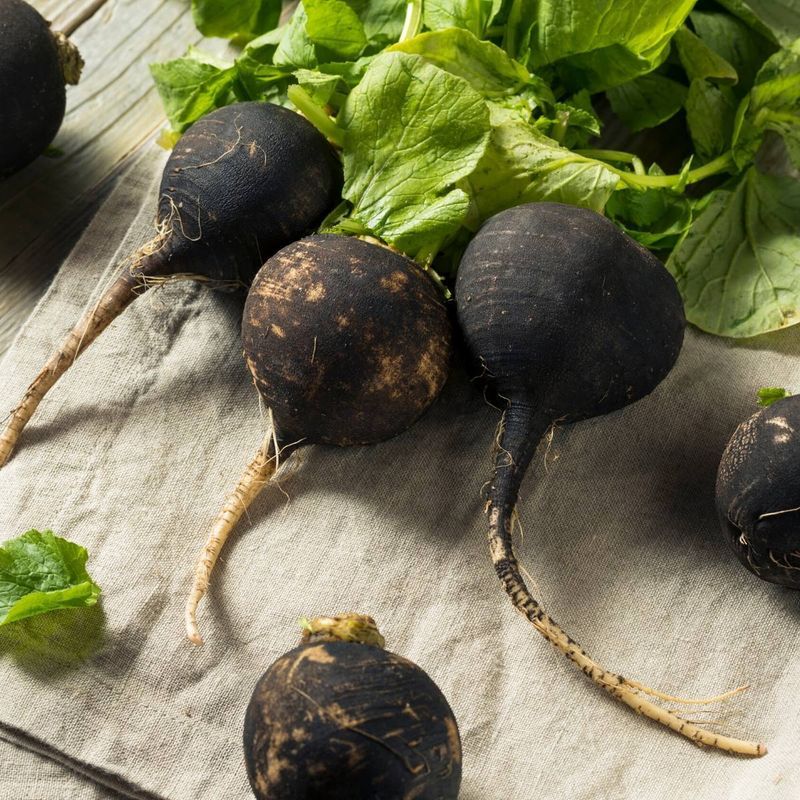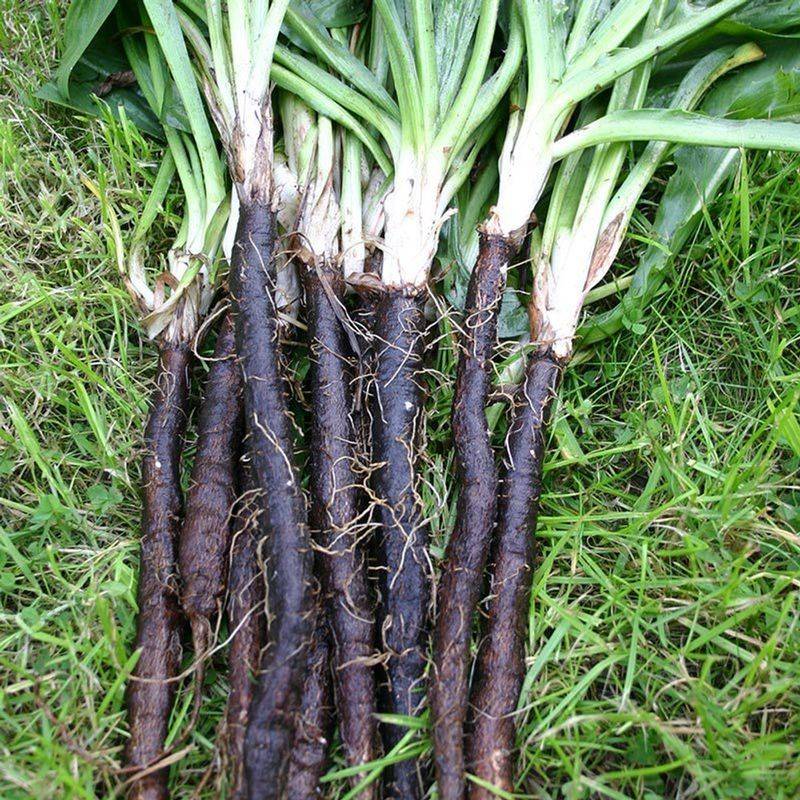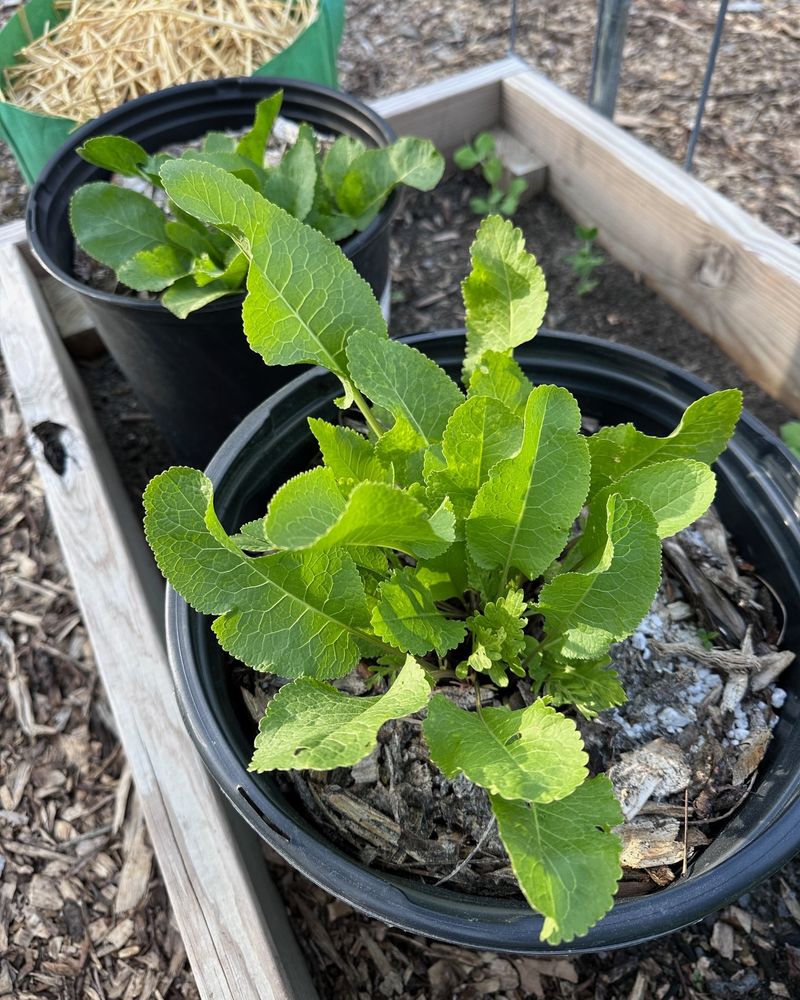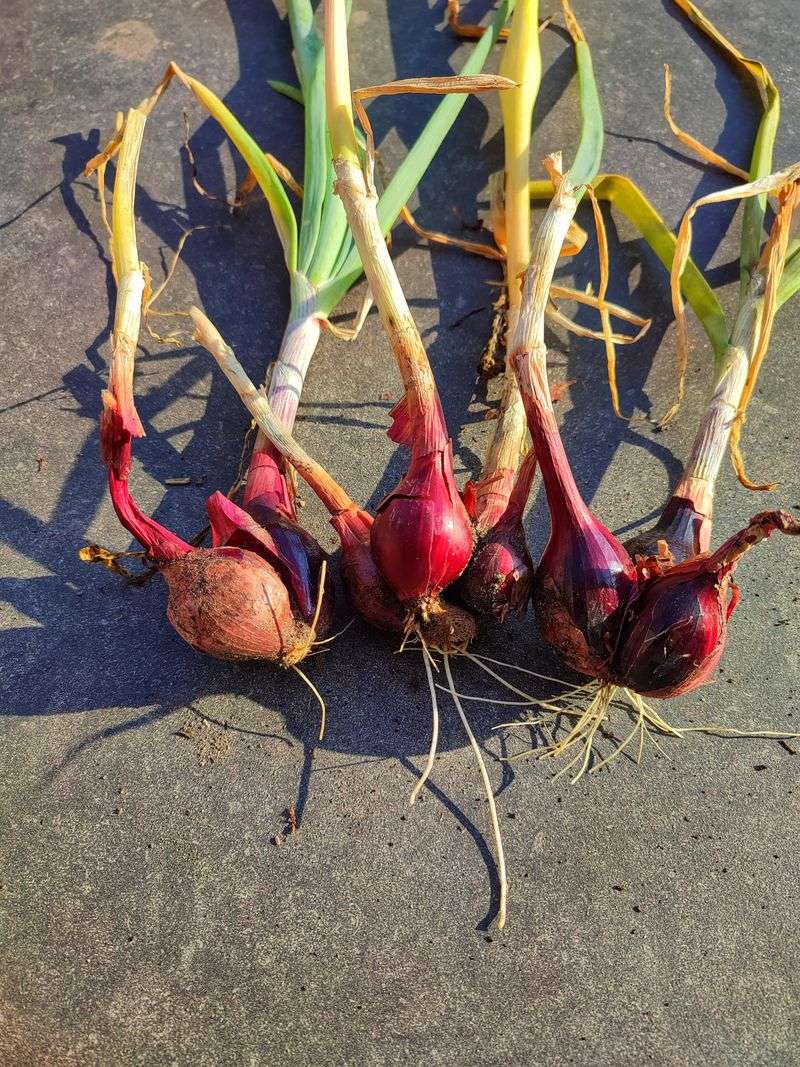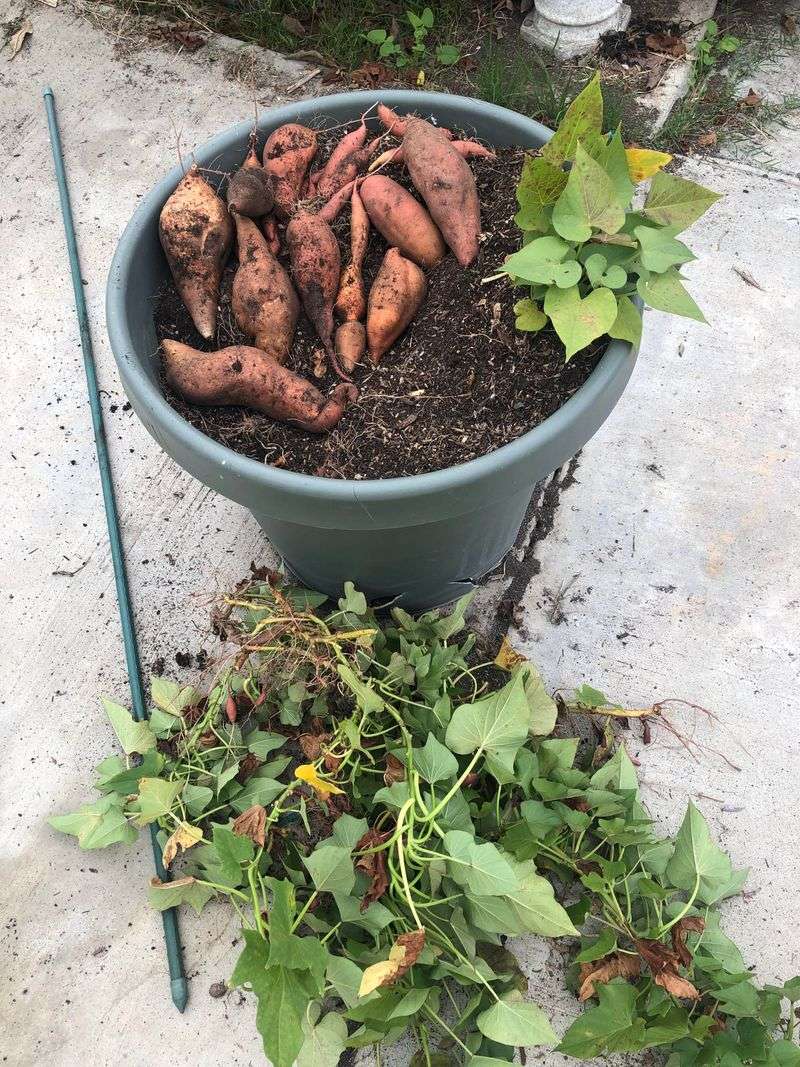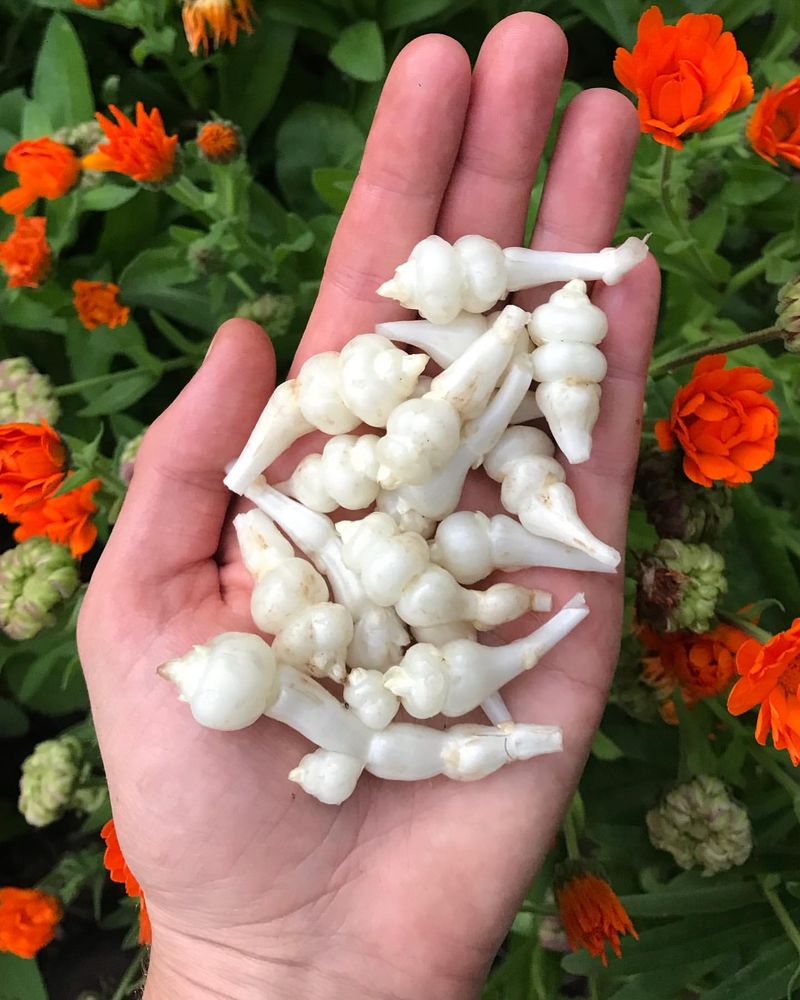Late summer in Montana may feel like the season’s wrapping up, but for root vegetables, it’s just getting started. The cooler temps are gentle on young plants, giving them time to establish before the real chill kicks in.
Many folks don’t realize how much growing time is still on the clock. Hardy crops like carrots, beets, and turnips can thrive now—or even overwinter with a little protection.
With a shorter growing season, timing is everything. Plant smart, and you’ll be harvesting fresh veggies while others are stashing their garden tools for good.
1. Radishes
Quick to mature in just 3-4 weeks, these crisp root vegetables are perfect for Montana’s cooling temperatures. The shorter days actually improve their flavor and prevent them from becoming woody or overly spicy.
For my garden near Helena, I’ve found that sowing small batches every 7-10 days provides continuous harvests until hard frost. The cold-hardy varieties like ‘Winter White’ and ‘Daikon’ can even withstand light freezes.
Provide loose, well-draining soil and consistent moisture for the best results. No need for fertilizer in decent soil – too much nitrogen produces lush tops but disappointing roots.
2. Turnips
Cool weather brings out the sweetness in these often overlooked root vegetables. When planted now, turnips develop without the bitterness that summer heat can cause.
Last September in Bozeman, I sowed ‘Purple Top White Globe’ and still harvested tender roots well into November. They’re surprisingly frost-tolerant and actually taste better after light freezes convert their starches to sugar.
Harvest small for milder flavor or let them grow larger for storage. Don’t forget the nutritious greens – they’re delicious when young and tender, giving you two vegetables from one plant.
3. Beets
Cooler evenings in Montana actually help these colorful roots develop better flavor and deeper color. They’ll mature in about 50-60 days, making them perfect for late-season planting.
My favorite varieties for late planting include ‘Bull’s Blood’ and ‘Chioggia’ – both seem to handle our unpredictable fall weather well. Soak seeds overnight before planting to speed germination, which can be spotty in cooling soil.
Thin seedlings to 3-4 inches apart once they reach about 2 inches tall. Those thinnings make excellent additions to salads, so nothing goes to waste in your garden.
4. Carrots
Many Montana gardeners don’t realize that late summer plantings often produce sweeter, more flavorful carrots than spring sowings. The cooling soil temperatures reduce bitterness while encouraging sugar development.
If you’re starting later than planned, choose shorter varieties like ‘Parisian’ or ‘Romeo’ that mature quickly. I’ve had success with ‘Napoli’ and ‘Mokum’ varieties when planted in mid-August near Missoula.
Cover newly seeded beds with burlap or row cover to maintain moisture until germination. Mulch well as temperatures drop to extend your harvest window – carrots can handle moderate frost and become sweeter afterward.
5. Parsnips
Patient gardeners are rewarded with these sweet, nutty roots that actually improve with frost exposure. Unlike many vegetables, parsnips develop their best flavor after temperatures dip below freezing.
Germination can be slow and spotty, so I plant extra seeds when sowing my Bigfork garden. For best results, prepare deep, stone-free soil that allows straight root development without forking.
You might not harvest until late fall or even early spring, but the wait is worthwhile. Some Montana gardeners actually leave parsnips in the ground all winter under heavy mulch, harvesting them as the ground thaws for incredibly sweet treats.
6. Rutabagas
Often confused with turnips, these larger, yellow-fleshed roots have a buttery, slightly sweet flavor that improves after light frosts. They’re perfect for Montana’s cooling fall temperatures and store exceptionally well.
With a 90-day maturity time, plant them now for late fall harvests. Even if they don’t reach full size before winter, smaller rutabagas are actually more tender and flavorful than oversized ones.
Keep soil consistently moist during the growing period to prevent woody texture. After a few light frosts, dig them up, trim the tops, and store in cool, humid conditions for months of winter meals.
7. Daikon Radishes
Unlike their small spring cousins, these long white radishes grow quickly even as daylight hours decrease. Their powerful roots break up compacted soil, making them perfect for improving garden beds while also providing food.
In my garden near Kalispell, daikons reliably reach harvestable size in about 45-60 days when planted in late summer. They handle light frosts without complaint and often taste sweeter afterward.
Use them fresh in salads, quick-pickled, or in stir-fries. If you can’t use them all, consider leaving some in the ground as a cover crop – they’ll decompose over winter, adding organic matter and creating channels for spring water drainage.
8. Kohlrabi
Though technically not a root but a swollen stem, this unusual-looking vegetable grows exceptionally well in Montana’s cooling fall temperatures. The bulb-like portion develops above ground while sending roots deep for nutrients.
For fall planting, I’ve had the best luck with ‘Korridor’ and ‘Kolibri’ varieties, which mature in just 45-60 days. Even when nights get chilly in September, these hardy plants continue developing nicely.
Harvest when the bulbs reach tennis ball size for the most tender texture. Leave a few in the garden after light frosts – they can handle temperatures down to about 25°F and often become sweeter after cold exposure.
9. Jerusalem Artichokes
Not actually artichokes but sunflower relatives, these native plants produce knobby, nutrient-rich tubers perfect for fall planting or harvesting. Once established, they’ll return year after year with minimal care.
Plant tubers now about 4-6 inches deep and 12-18 inches apart. They won’t produce until next year, but fall planting gives them a head start on spring growth. My patch near Missoula has survived harsh winters with no protection.
These hardy perennials require almost no maintenance once established. Harvest after the first hard frost kills the tops, when their inulin content (a prebiotic fiber) converts partially to fructose, improving both digestibility and flavor.
10. Winter Radishes
Unlike their quick-growing spring counterparts, winter radishes like ‘Black Spanish’ and ‘Watermelon’ develop slowly and store beautifully. They thrive in cooling temperatures that would cause spring varieties to bolt.
Plant them now in rich, loose soil about 4-6 inches apart. Unlike spring radishes, these larger varieties need space to develop properly. I’ve found they grow particularly well in raised beds where soil stays warmer into fall.
The remarkable storage capability makes them worth the longer growth period. After harvesting in late fall, store them in damp sand in a cool place, and you’ll have crisp, spicy radishes to enjoy throughout Montana’s long winter months.
11. Salsify
Often called the ‘oyster plant’ for its subtle seafood-like flavor when cooked, this lesser-known root vegetable deserves more garden space. The long, slender roots develop best in cooling weather without summer’s heat stress.
Direct seed now in deeply worked soil free of rocks that could cause forking. Not every root crop can handle late starts, but salsify has a 120-day growing season that spans into fall, with flavor improving after frosts.
Leave some roots in the ground over winter under thick mulch – they’ll survive Montana’s cold temperatures and be ready for early spring harvest. The second-year flower stalks are also edible, providing asparagus-like shoots before going to seed.
12. Horseradish
Fall is actually the ideal time to plant this pungent perennial root that thrives in Montana’s climate. Once established, it returns year after year, requiring minimal care while providing zesty harvests.
Plant root cuttings at a 45-degree angle, with the top end about 2 inches below the soil surface. The slanted planting makes future harvesting easier and encourages straight root development. In my Whitefish garden, horseradish has survived -30°F winters without protection.
Contain this vigorous plant by growing it in buried buckets with drainage holes, or it might take over. Harvest in late fall after several frosts have converted starches to sugars, maximizing the signature spicy flavor.
13. Potato Onions
Unlike typical onions grown from seed, these heirloom multiplier onions grow from bulbs that divide underground, similar to garlic. Fall planting gives them a head start for earlier summer harvests next year.
Plant individual bulbs now about 2-3 inches deep and 6 inches apart. Mulch well before hard freezes to prevent frost heaving. Each bulb you plant will multiply into a cluster of 3-8 new onions by next summer.
You might be surprised how well these grow even when daylight hours start shrinking. My potato onions planted near Great Falls in September developed strong roots before winter dormancy, then exploded with growth in early spring, producing harvests weeks before spring-planted onions.
14. Sweet Potatoes
While not typically associated with Montana gardens, fast-maturing varieties can succeed with proper timing and protection. Start slips (rooted cuttings) indoors now for transplanting into warm soil as soon as possible.
Choose quick-maturing varieties like ‘Beauregard’ or ‘Georgia Jet’ that need just 90 days to produce. Plant in raised beds covered with black plastic to maximize soil warmth. In my Billings garden, adding season extenders like low tunnels has made all the difference.
Harvest before soil temperatures drop below 55°F to prevent chilling injury. Even small sweet potatoes are delicious, so don’t be disappointed if yours don’t reach supermarket size in our shorter growing season.
15. Crosnes
These unusual, knobby tubers (pronounced “crones”) look like small white Michelin men and offer a water chestnut-like crunch. Also called Chinese artichokes, they’re actually mint relatives that produce edible tubers in fall.
Plant tubers now about 2-3 inches deep and 12 inches apart. They don’t need rich soil – average garden conditions work fine. If you’ve still got empty spots in your bed, these could be a unique addition to your Montana garden.
Harvest after the first hard frost kills the tops, digging carefully to find the small, spiral-shaped tubers. Leave some in the ground for next year’s crop. They’re winter-hardy throughout Montana and will return year after year with minimal care.

